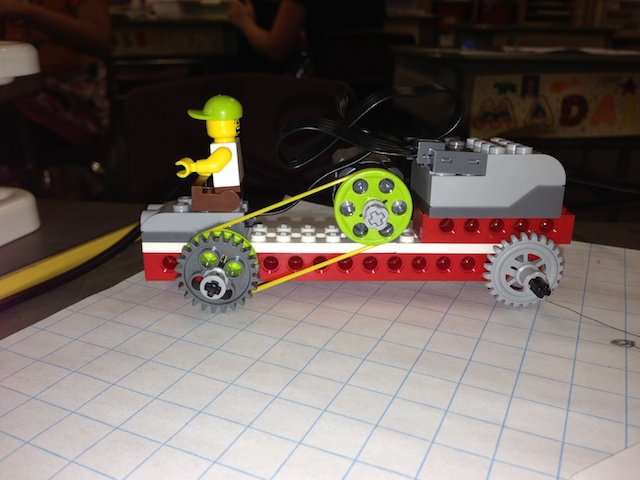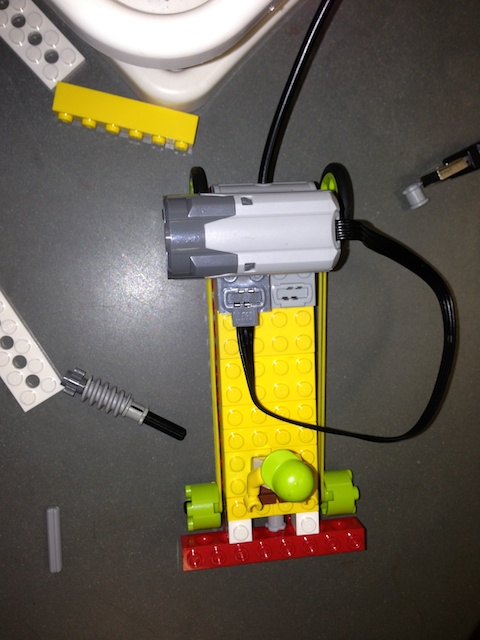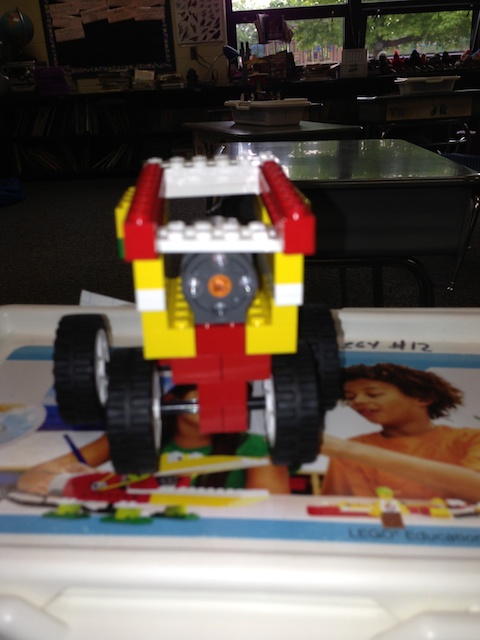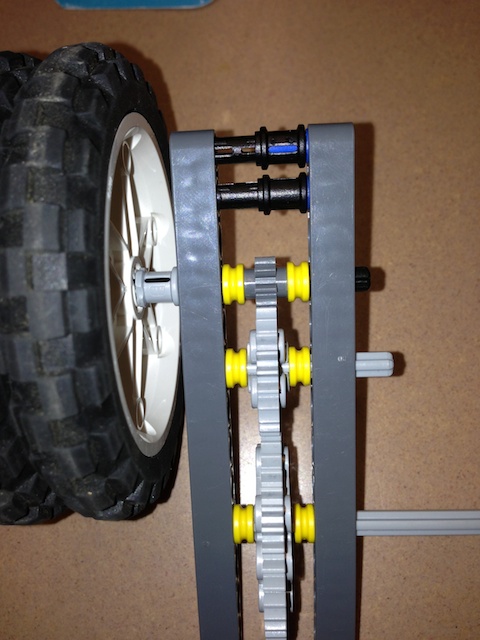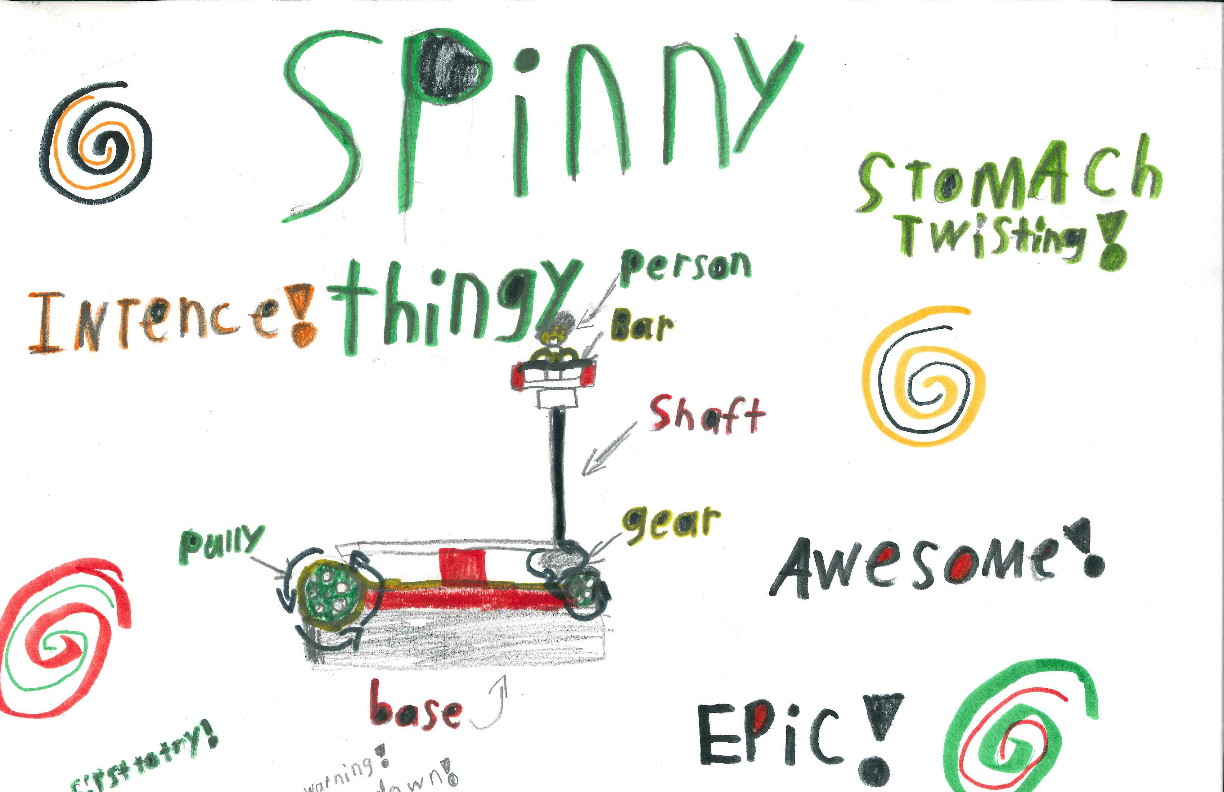I needed another open ended challenge for a grade 3 class that wanted to do another project this year. A couple of second graders made a car for the amusement park challenge this year (see below) so I thought I would try it with a whole class. I wondered if there were sufficient parts to enable all the kids in a class to succeed at making a vehicle.
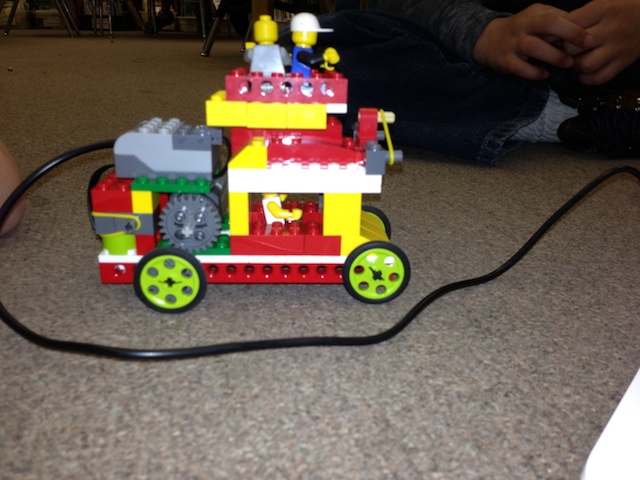
One thing I realized later after was that the car above was made with extra parts. I have no idea how that team found longer axles and 2 additional green pulleys and tires to make their wonderful car.
But we quickly realized with the grade 3 class with the basic WeDo kit and no additional parts that the axles that come with the kit are not long enough to span the base piece as the second graders had done. We also saw that they would have to use gears as wheels in most cases to get 4 wheels.
I felt a strong urge to go get some longer axles from resources kits to help them and additional tires but we decided to wait to see if they could solve the problem. Sure enough, some teams were able to construct a car chassis from beams.
Even though we went over the 3 ways to drive the wheels before, you can see from the photos below that some teams will need additional work to connect the motor to the wheels either 1) directly, 2) with gears, or 3) with pulleys.
We did decide that though it might not be 100% required to succeed, we would give the students 2 longer axles and 4 wheels from the resource kits.
I was pleased that this project seems very doable for third graders. All the photos below were the result of one 60 minute design and building session. This included about 10 minutes of teacher talk at the beginning to go over the 3 methods to drive the wheels and a review of the engineering design process. I will be writing this up and adding it to the Elementary Engineering Curriculum.
